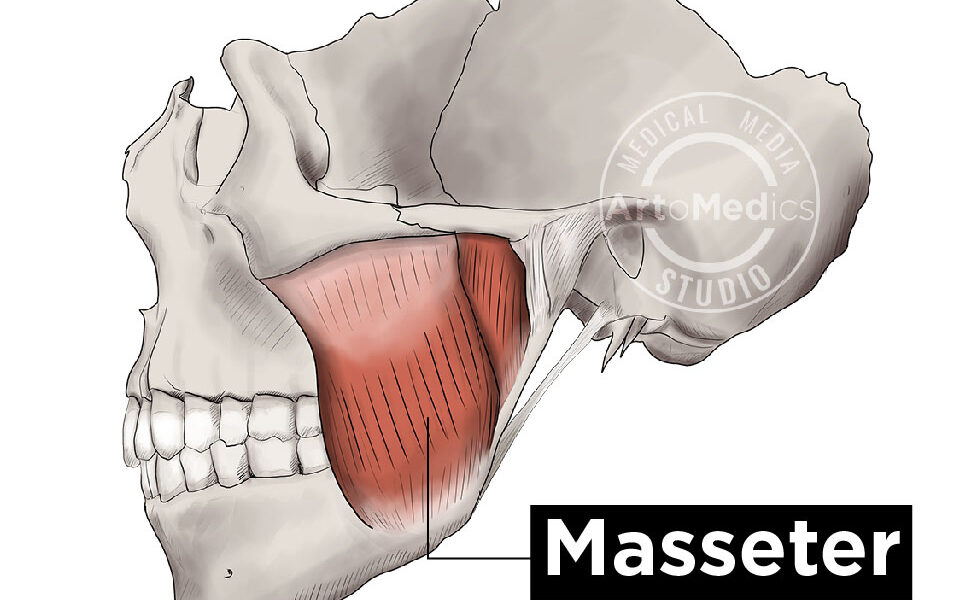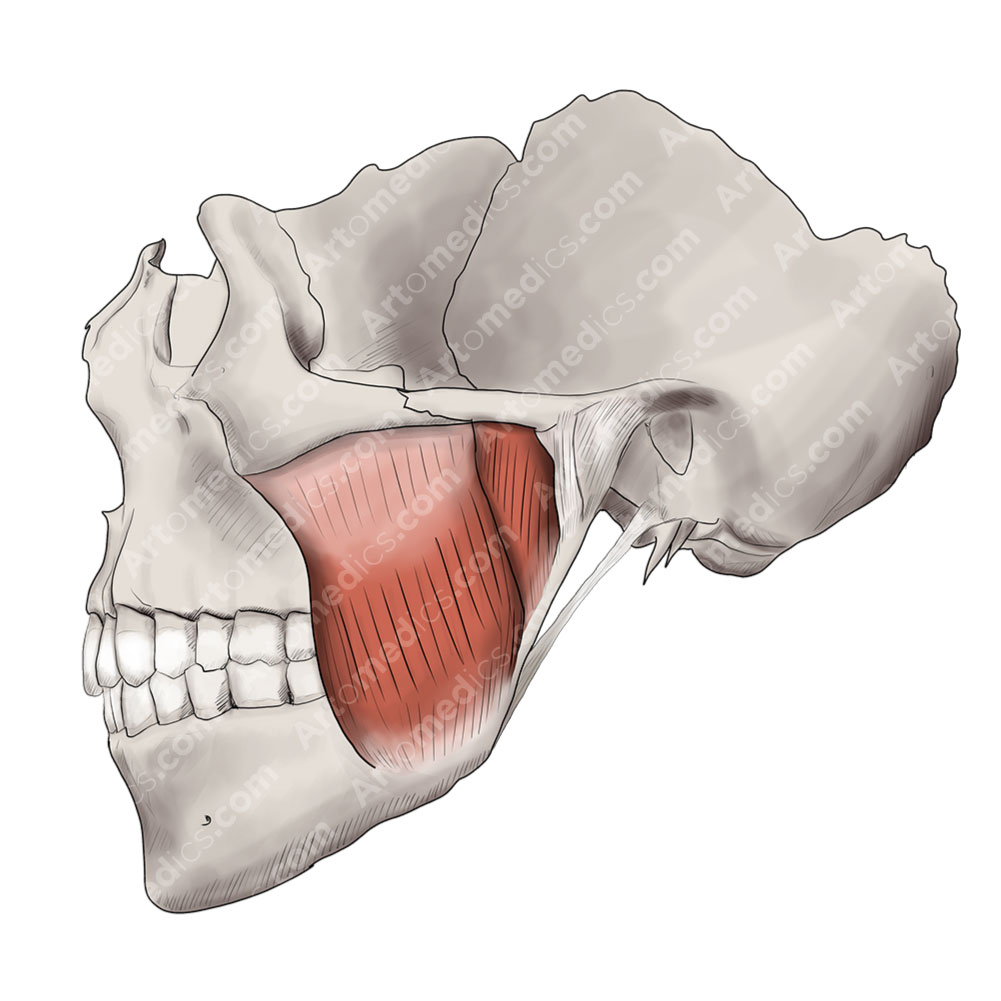Masseter Muscle

When you clench your teeth and your face looks square, it’s thanks to the Masseter muscle, the most superficial and obvious of the mastication muscles.

The Masseter muscle, along with it’s coworkers, temporalis and pterygoids, is one of four mastication muscles. They help you grind and chew foods and are only found in mammals. This muscle is specially powerful in herbivores, to munch plants and whatnot.
This muscle has two parts, a superficial and a deep one. The superficial division is a lot more visible and bigger than the deep portion. Embryologically speaking, it originates from the first pharyngeal arch or mandibular arch, along with other structures that surround or attach to the mandibula and are involved in mastication/chewing.
The Masseter varies very little within humans and throughout the animal kingdom. In humans, Asians have the most notable difference, with masseteric hypertrophy, which looks like square jawline. This can lead to a lot of them going after botox treatments for aesthetic reasons.

What does the masseter muscle do?
The masseter elevates the jaw, closing the mouth with powerful force of a bite. It can also push the jaw out (protrusion), along with the lateral and medial pterygoids but much more powerful.
Jaws of steel
If you get a dose of a drug called Succinylcholine, you can get all your limb muscles to go, you know, flaccid. Except your jaw, which gets shut down rigid (a condition known as Masseter Muscle Rigidity). This can be a real problem when this patient needs to be intubated.
Another reason why your jaw would go rigid as steel is suffering Tetanus, caused by the toxin produced by the bacteria Clostridium tetani. Once it reaches the central nervous system, the toxin doesn’t allow muscles to relax, keeping them contracted. Trismus is the term used to describe muscle rigidity and spasms on the temporalis and masseter muscle, locking the jaw into a sardonic smile or risus sardonicus commonly found in late stage tetanus patients.
Powerful chewing muscle, responsible for square jaws.
Masseter muscle facts
Nerve and blood supply
The masseter muscle is innervated by the Masseteric nerve (from mandibular nerve (CN VIII), along with most of the muscles of the face.
The blood supply comes from Masseteric artery.
Muscle Attachments
The masseter muscle originates from the maxillary process and zygomatic arch (zygomatic bone).
The insertion is in the Angle of the ramus of the mandible, coronoid process.
References
Standring, Susan. Gray’s Anatomy: The Anatomical Basis of Clinical Practice. , 2016. Print.
Corcoran NM, Goldman EM. Anatomy, Head and Neck, Masseter Muscle. [Updated 2020 Jul 27]. In: StatPearls [Internet]. Treasure Island (FL): StatPearls Publishing; 2021 Jan-. Available from: https://www.ncbi.nlm.nih.gov/books/NBK539869/

Leave a Reply